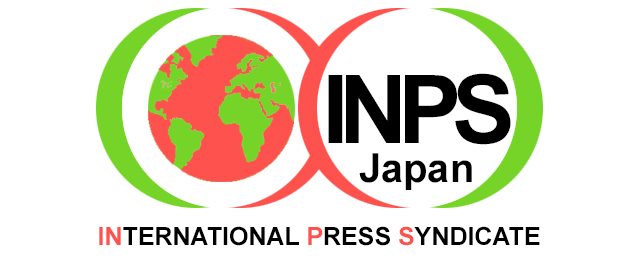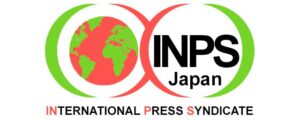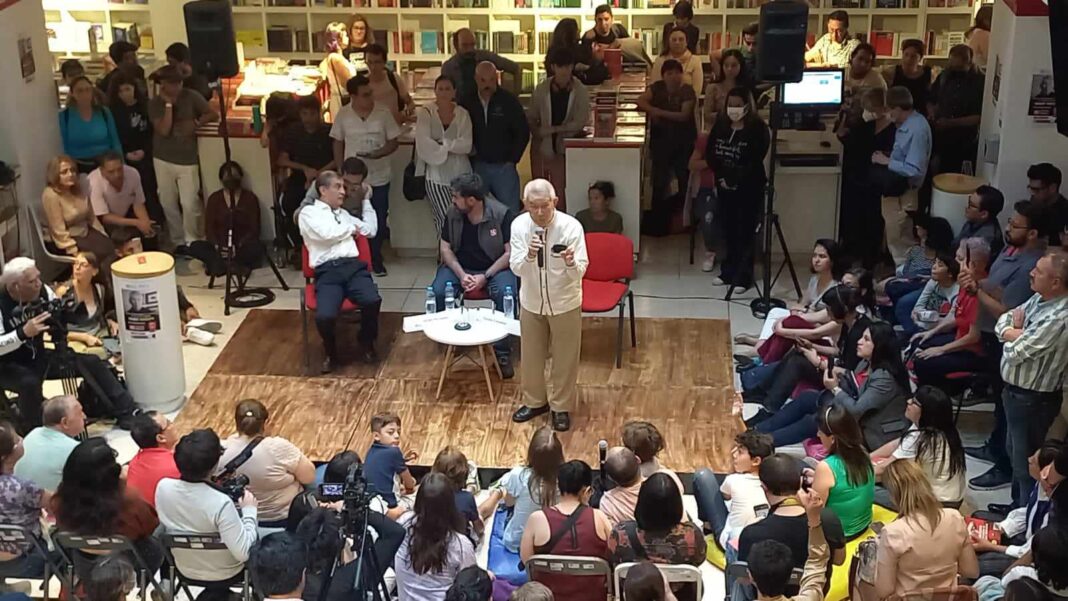【Mexico City INPS=Guillermo Ayala Alanis】
We (hibakusha) have an obligation to tell people what happened when the atomic bomb was dropped on Nagasaki. …… That is because today, when the specter of nuclear attack (the possibility of an actual use of nuclear weapons) is once again a reality, we can no longer say that that tragedy will never happen again.” Yasuaki Yamashita, who was exposed to the atomic bomb in Nagasaki in 1945, said. |JAPANESE| SPANISH|
On August 9 of this year, at the Octavio Paz Library in Mexico City, Sergio Hernandez published a book titled “Yasuaki Yamashita’s A-Bomb Testimony” in commemoration of the 78th anniversary of the 1945 atomic bombing of Nagasaki. Hernandez compiled a series of interviews with Mr. Yamashita about his experience of the atomic bombing.
In the book, Mr. Yamashita describes the immediate aftermath of the atomic bombing of Nagasaki: “The scene seemed more terrifying than being in hell.” He said. On the morning of that day (August 9, 1945), when the atomic bomb exploded, there was a tremendous flash as if a thousand bolts of lightning had struck the area simultaneously, and everyone in Nagasaki feared that it might have been a chemical attack.
Yamashita, who was only six years old at the time, remembers that buildings, houses, and roads were all destroyed, and many people died instantly, while many others were seriously injured. Yamashita himself was with his family when he remembers his sister suffering a head injury from shatterd glasses blown away by the blast.
Yamashita’s sister at the time who thought the attack was chemical one recalled that the blood dripping from her head “was dangerous oil that the U.S. military had used on the Japanese.”
Yamashita told the audience about the situation immediately after the bombing: “Many people faced starvation. People had to walk for miles to find farmhouses, and those who still had possessions had to trade their valuables for potatoes, vegetables, and other food. He said. He also remembers the devastation of the atomic bombing: hospitals and other medical facilities were destroyed immediately after the bombing, and many medical personnel were either killed instantly or exposed to radiation creating a hopeless situation where victims were dying without any medical supports.
After graduating from high school, Mr. Yamashita found a job, but one day he felt something wrong with his body, and tests revealed that he had been affected by radiation. He often suffered from severe anemia and suddenly collapsed, forcing him to change jobs. In Japan at the time, there was no general awareness of radiation, and the lack of understanding of Hibakusha with such health problems often manifested itself in discrimination and slander, such as “people contaminated by the atomic bomb,” and Hibakusha suffered discrimination in employment and marriage. Mr. Yamashita worked at the Atomic Bomb Survivors Hospital, where he witnessed many Hibakusha suffering from A-bomb diseases and dying on a daily basis.
Looking back on those days, Ms. Yamashita said, “Those were very painful days. I thought that I would eventually become like them. I couldn’t look after the lives of the patients every day. I wanted to go somewhere where I didn’t know anyone, somewhere where even if I was there, no one would think, ‘This person is an A-bomb survivor’, he recalls.
In 1968, Mr. Yamashita was assigned to work at the “Japan Press Office” in Mexico City during the Mexico Olympics, and he decided to move there. In other words, he had found the place he had longed for, a place where he could live a life without discrimination and without anyone knowing about his A-bombed past. The people he met in Mexico were all kind, and for a while, Mr. Yamashita felt that he could work, earn money, build a better new lifestyle, and live peacefully in this new place. After a while, however, his symptoms of A-bomb sickness began to recur, and he confided in one of his best friends, who referred him to a doctor he knew.
One day in 1995, he received a phone call from his friend’s son, who had learned the secret that Mr. Yamashita was a Nagasaki hibakusha. The young man said he wanted to invite Mr. Yamashita to a conference to be held at the university where he was enrolled. However, Mr. Yamashita initially refused the invitation, saying that he could not give a testimony about the atomic bombing, as it would bring back painful memories of his past.
However, facing this young man’s insistence, Mr. Yamashita finally decided to accept the invitation.
At that time, Mr. Yamashita said that he realized anew that since he had accepted the invitation to give his A-bomb testimony, he, as the person who had actually experienced the bombing, had a great responsibility to convey the reality of the atomic bombing to as many people as possible.
Mr. Yamashita said that the generation of people who still remember the A-bomb experience are now in their 80s, and the time available to directly share their experiences is limited.
He hopes to convey to as many people as possible that nuclear weapons are weapons that must never be used again, because if they are used, countless people will be slaughtered, and even if they survive, they will suffer the agonies of generations to come.
“Nuclear weapons themselves are the dangerous enemy, not people behind the nuclear attack. This is because, a hatred against people will only leads to further cycles of hatred. Therefore, at some point in our history, we must have forgiveness for nuclear attacks in the past”, he said.
It is estimated that 140,000 people died in Hiroshima and 74,000 in Nagasaki that year as a result of the nuclear attack.
Yasuaki Yamashita’s A-bomb Testimony is part of Vientos del Pueblo Collection, a book of 40,000 copies published and edited by the Japan Fund for Economic and Cultural Affairs.
INPS Japan/GESE


